(BIVN) – January is Volcano Awareness Month, and in addition to the various USGS Hawaiian Volcano Observatory talks and presentations, the Hawaiʻi Volcanoes National Park calendar is also “erupting with exciting programs”.
Here is the line-up courtesy the National Park Service:
Birth of Kahuku. Join a park ranger on an easy 1.5-hour, 1.5-mile walk to explore the rich geologic history of Kahuku. Traverse the vast 1868 lava flow, see different volcanic formations including the Southwest Rift Zone of Mauna Loa. Learn about the Kanawai o Pele – the natural laws of land building that govern Pele’s realm. This easy walk supports the USGS Hawaiian Volcano Observatory’s Volcano Awareness Month.
When: Sunday, January 7, 2024 at 9:30 a.m.
Where: Meet at the Kahuku Visitor Contact Station
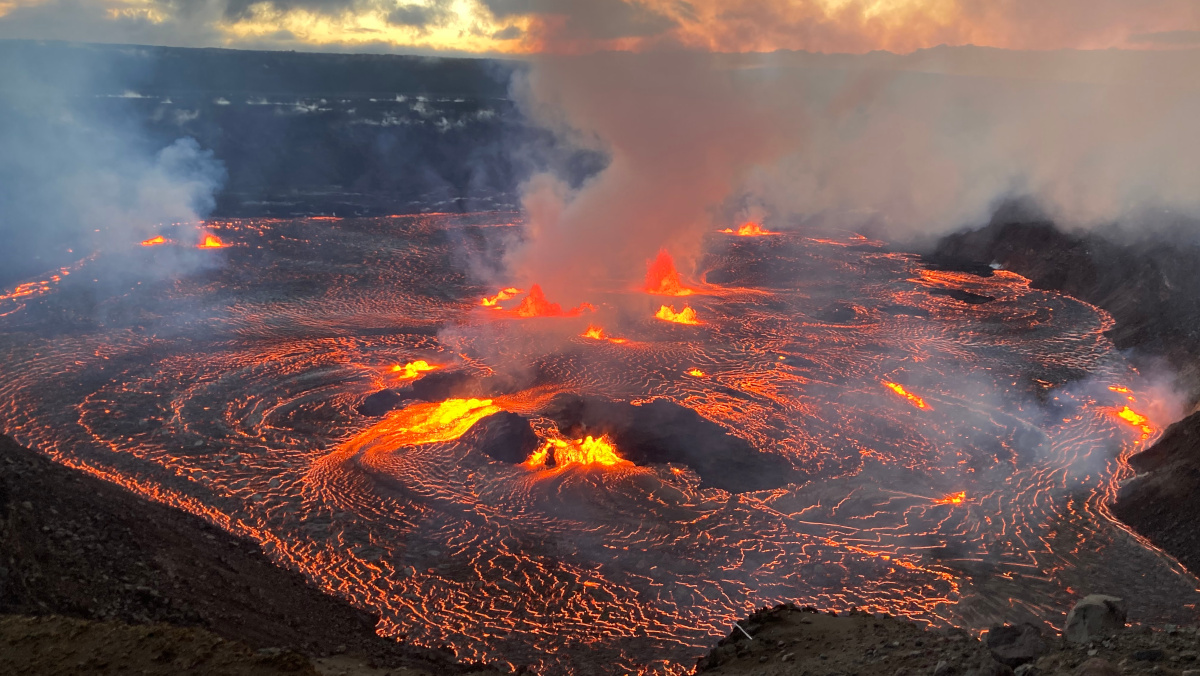
Several active vents erupt lava in Halemaʻumaʻu crater at the summit of Kīlauea volcano. (USGS Photo)
Kīlauea Volcano’s Crater-Filling Summit Eruptions. Following the dramatic collapses in 2018, the summit of Kīlauea has been in a multi-year phase of crater filling. Five separate eruptions—ranging in duration from about a week to over a year—have filled Halema‘uma‘u crater with lava flows and lava lakes. These eruptions have been accompanied by ever-changing geophysical signals recorded by the dense monitoring network. Join USGS Hawaiian Volcano Observatory geologist Matt Patrick as he summarizes the recent activity at Kīlauea summit and highlights its patterns of behavior and Hawaiian Volcano Observatory monitoring techniques. This After Dark in the Park program supports USGS Hawaiian Volcano Observatory’s Volcano Awareness Month.
When: Tuesday, January 9, 2024 at 7 p.m.
Where: Kīlauea Visitor Center Auditorium
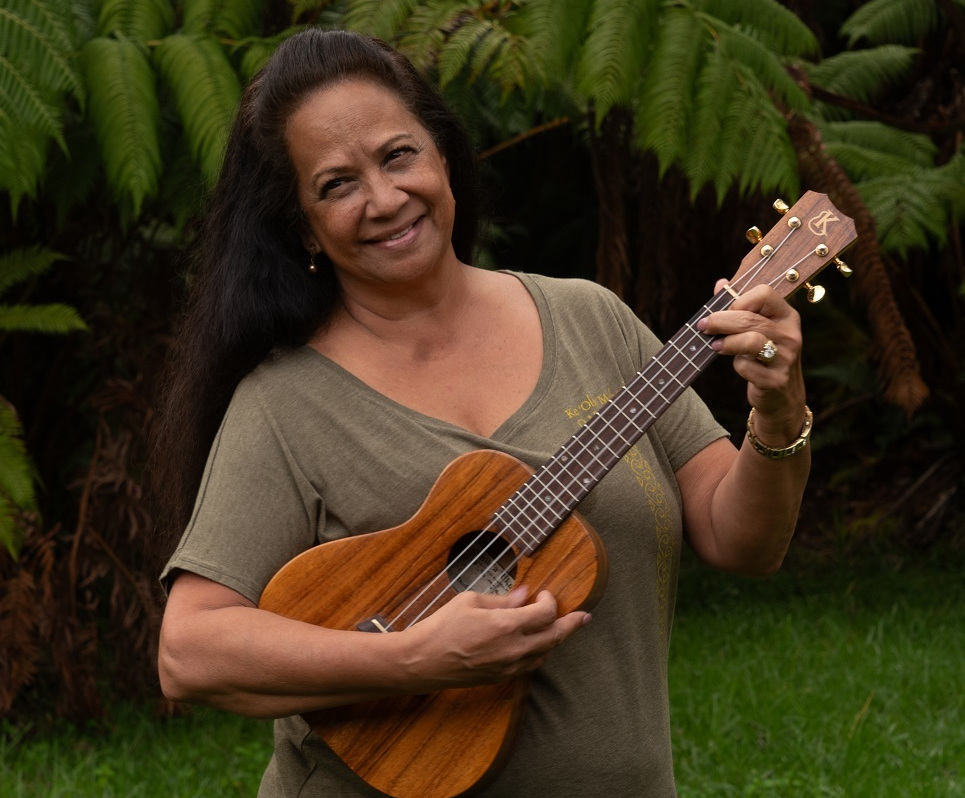
Meleana Manuel will offer an easy ‘ukulele lesson on January 10, 2024 from 10 am. to noon in the park. (NPS photo)
Learn to Play ʻUkulele. The modern Hawaiian ʻukulele evolved from the machete de braga, a small stringed instrument introduced by Portuguese immigrants to Hawaiʻi in the late 1800s. Come join Kumu Hula Meleana Manuel who will show you how to play simple and fun Hawaiian songs. Several ʻukulele will be provided, or bring your own! Part of Hawaiʻi Volcanoes National Park’s ongoing ‘Ike Hana Noʻeau (Experience the Skillful Work) Hawaiian cultural programs, and co-sponsored by Hawai‘i Pacific Parks Association and the Friends of Hawai‘i Volcanoes National Park.
When: Wednesday, January 10, 2024 from 10 a.m. to 12 p.m.
Where: ʻŌhiʻa Wing (across Crater Rim Drive from Kīlauea Visitor Center)
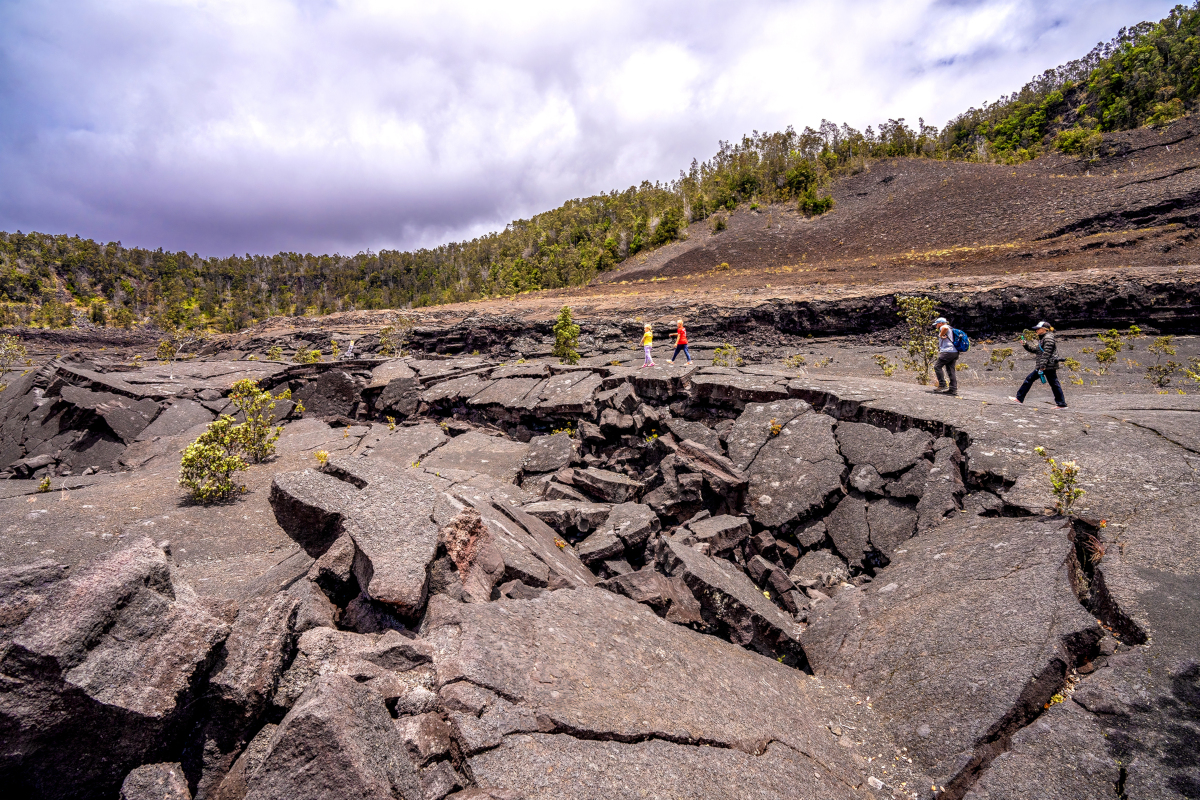
Hikers crossed the rugged and uneven crater floor of Kīlauea Iki in Hawaiʻi Volcanoes National Park. (NPS Photo/Janice Wei)
Kīlauea Iki Crater Guided Hike. The four-mile (6.2 km) Kīlauea Iki Trail is one of the park’s iconic trails, where hikers emerge from the intersection of lush native rainforest and eruption onto a steaming crater floor. Delve into the secrets of Kīlauea Iki with Park Ranger Mequette Gallegos. Discover how fountians of lava from the giant brick red cone, Puʻupuaʻi, jetted up 1,900 feet (579 m) in 1959 and left behind a giant bathrub ring of lava reside on the crater walls. Part of Volcano Awareness Month special programs.
When: Saturday, January 13 at 10 a.m. to around noon
Where: Meet Ranger Mequette at the Kīlauea Iki parking lot.
Wear: Sturdy, closed-toe walking shoes or boots, protective gear for sun and rain, and bring water and a snack.Fee-Free Day for Martin Luther King, Jr. Day. All fee-charging national parks including Hawaiʻi Volcanoes National Park are free in honor of the legacy of Dr. Martin Luther King, Jr. Dates for all six 2024 fee-free days are posted on the National Park Service website.
When: Monday, January 15, 2024 all day
Where: All fee-charging national parks in the U.S.
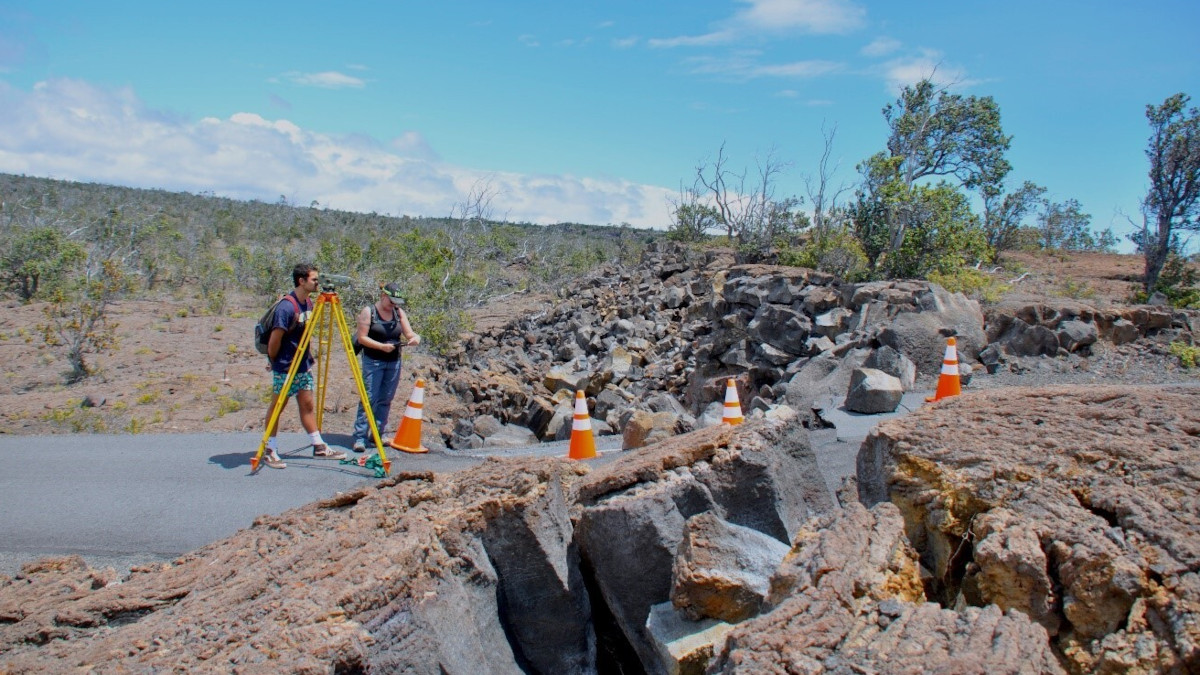
UH-Hilo geology students measure vertical offset of Hilina Pali Road on Kulanaokuaiki Pali in Hawaiʻi Volcanoes National Park after the 2018 summit collapse events. (USGS Photo)
Past Eruptions Near the Summit of Kīlauea. Kīlauea has erupted five times (and counting!) since 2020 within Kaluapele, the caldera at the summit. Each eruption has been accompanied by a period of unrest in the form of earthquakes and ground deformation both within and outside the summit caldera. Join University of Hawai‘i at Hilo geology professor Steve Lundblad as he explores past eruptions near the summit of Kīlauea and structural features such as the Koa‘e fault zone. Learn what current monitoring observations and past eruptions can tell us about where we might expect to see future eruptions and where lava is less likely to erupt. This After Dark in the Park program supports USGS Hawaiian Volcano Observatory’s Volcano Awareness Month.
When: Tuesday, January 16, 2024 at 7 p.m.
Where: Kīlauea Visitor Center AuditoriumCoffee Talk: The Sacred Art of Hula. Join Kumu Hula Keala Ching of Ka Pā Nā Wai Iwi Ola (The Ancient Waters of Life) for a talk story about hula, its history, the dance, significance of the implements, and the ornamentation (lei, paʻū etc.). Kumu started Na Wai Iwi Ola in 2000 and he is a Hawaiian cultural educator, composer, songwriter, and spiritual advisor to many Hawaiian organizations. He lives and breathes aloha into his Hawaiian heritage with his strong presence and great heart.
When: Saturday, January 20, 2024 at 9:30 a.m.
Where: Kahuku Unit Visitor Contact StationHike Back in Time to the 1969-74 Maunaulu Eruption. University of Hawaiʻi at Hilo professor Dr. Lis Gallant leads this two-hour guided walk along the fissure that started the Maunaulu eruption on May 24, 1969. The five-year eruption ultimately built a lava shield, Maunaulu (“growing mountain”), a prominent landmark on Kīlauea volcano’s East Rift Zone. It also sent lava flows to the coast and allowed for detailed observations of eruption processes. During the walk, Lis describes how fissures form, how lava fountains erupt, how these eruptions create the environment you see, and why some lava drained back into the ground. Part of Volcano Awareness Month special programs.
When: Saturday, January 20, 2024. Hike starts at 10 a.m.
Where: Meet at the Maunaulu parking lot before the 10 a.m. start time.
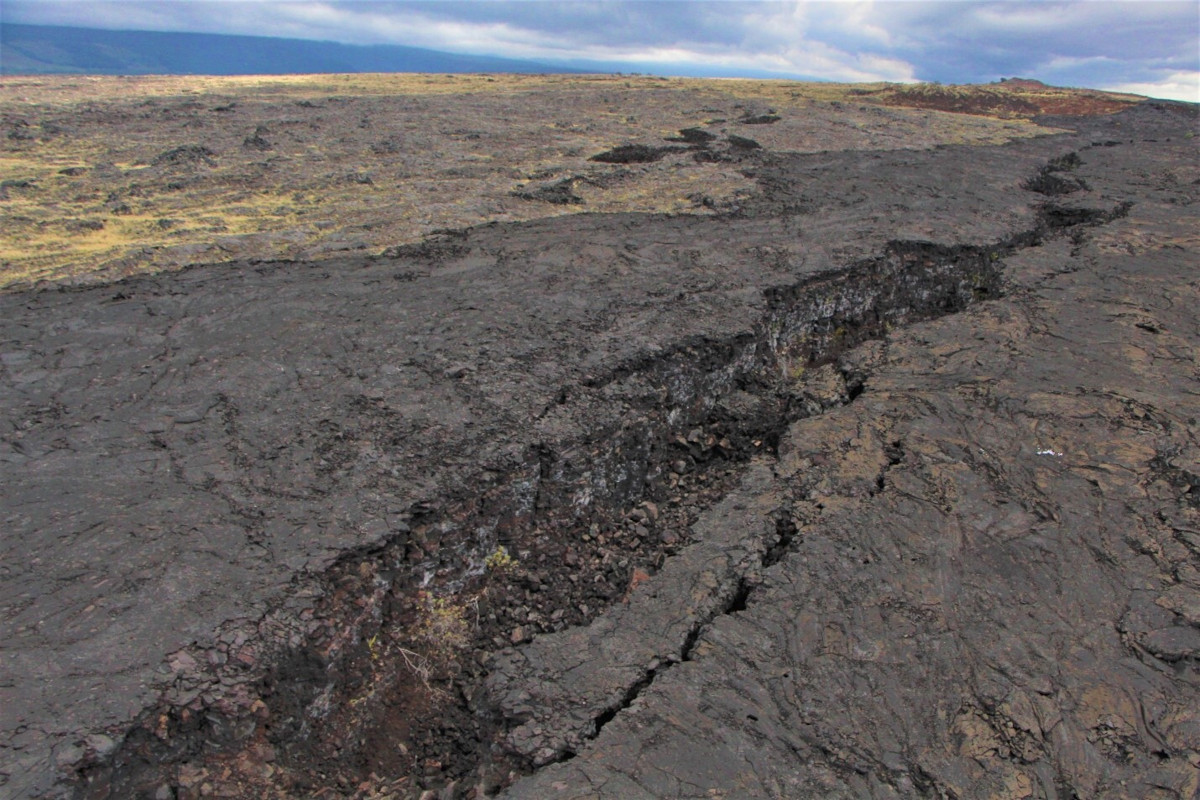
Low angle aerial view of the Great Crack and surrounding 1823 lava flows (dark gray) along Kīlaueaʻs lower SW Rift Zone. (USGS photo)
A Brief History of Kīlauea Volcano’s Southwest Rift Zone. Kīlauea volcano’s Southwest Rift Zone has shown increased earthquake activity during the fall of 2023. What is known about this region and eruptions that have occurred there over the past 200 years or more? William Ellis, an English missionary, provided the first written documentation of this area, including the “Great Crack” and the 1823 Keaīwa eruption. Older eruptions, such as those from the Kamakaiʻa Hills around 1815 have evolved chemistries not typical of Kīlauea. Other Southwest Rift Zone eruptions occurred in 1868, 1919-20 (Maunaiki), September 1971, and December 1974. Join USGS Hawaiian Volcano Observatory geologist Drew Downs as he discusses these topics and more. This After Dark in the Park program supports USGS Hawaiian Volcano Observatory’s Volcano Awareness Month.
When: Tuesday, January 23, 2024 at 7 p.m.
Where: Kīlauea Visitor Center AuditoriumCoffee Talk: What Happened in 1868? Join RCUH-Hawaiian Volcano Observatory (HVO) geologist Katie Mulliken as she shares information about Mauna Loa, Earth’s largest active volcano, and tells the story of the destructive eruption and associated earthquakes in 1868. She will also share information on how HVO monitors Mauna Loa, which has erupted 34 times since 1843, most recently in 2022. During the talk, you learn about the eruptive history, structure, and current status of Mauna Loa. This Kahuku Coffee Talk program supports USGS Hawaiian Volcano Observatory’s Volcano Awareness Month.
When: Saturday, January 27, 2024 at 9:30 a.m.
Where: Kahuku Unit Visitor Contact StationStroll Through Haʻakulamanu (Sulphur Banks). Join USGS Hawaiian Volcano Observatory gas specialists Tricia Nadeau and Christine Sealing on a two-hour walk through the fumarolic area of Kīlauea volcano’s summit known as the Haʻakulamanu on the Sulphur Banks Trail. Why do volcanoes emit volcanic gases? How does the composition of gases at Haʻakulamanu differ from gases being emitted from within the caldera? Come learn the answers to these questions and more. Part of Volcano Awareness Month special programs.
When: Saturday, January 27, 2024 at 10 a.m.
Where: Meet at the Kīlauea Visitor Center and end at Wahinekapu (Steaming Bluff).Puʻu o Lokuana Cinder Cone Hike. Join this ranger-guided hike along the Pu‘u o Lokuana trail and learn about how a cinder cone is formed and the various uses of this hill over time. Enjoy a breathtaking view of lower Ka‘ū from its peak. Why is (and was) it considered a kumu waiwai (a source of wealth) by the many different inhabitants of Kahuku? This one-hour, half-mile walk supports the USGS Hawaiian Volcano Observatory’s Volcano Awareness Month.
When: Sunday, January 28, 2024 at 9:30 a.m.
Where: Meet at the Kahuku Visitor Contact Station
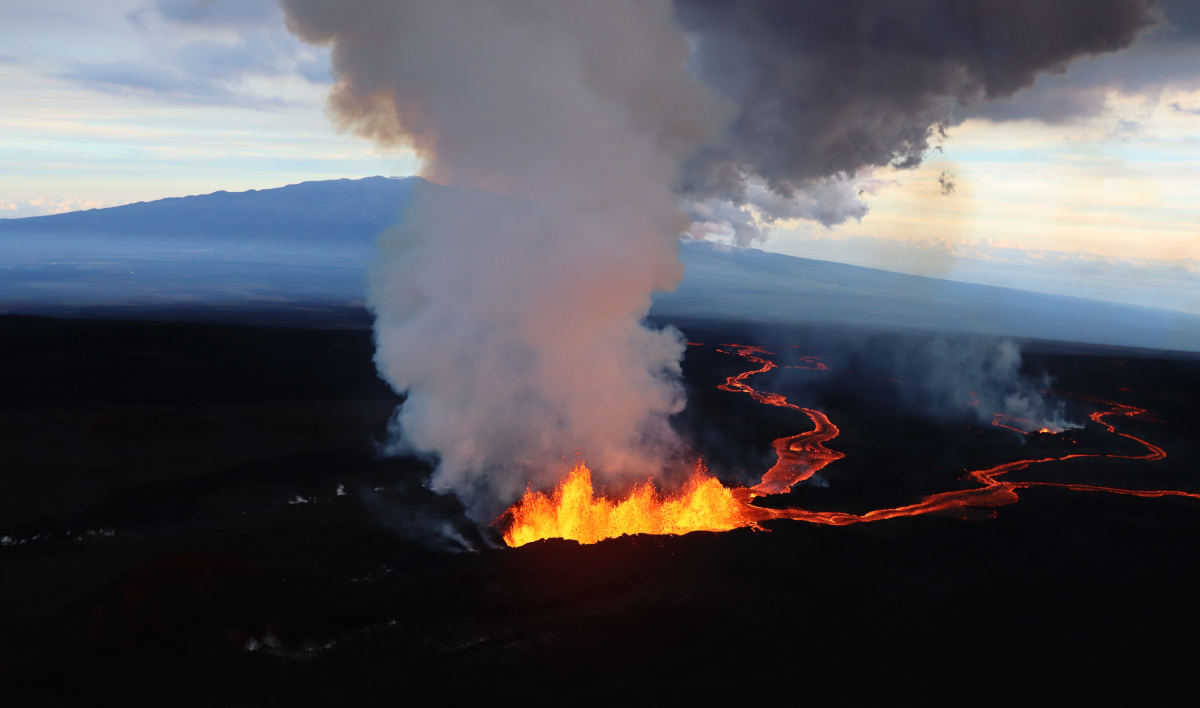
Vents erupt high on Mauna Loa volcano’s Northeast Rift Zone, feeding lava flows to the north and northeast, on November 30, 2022. (USGS photo)
Measuring Mauna Loa. Mauna Loa volcano’s 2022 eruption occurred following a 38-year period of repose. Although the volcano appeared quiet, monitoring signals were tracking movement beneath the surface in the months leading to the eruption. Join USGS Hawaiian Volcano Observatory geologist Frank Trusdell and geophysicist Ingrid Johanson as they summarize the unrest before the 12-day eruption that began within Mokuʻāweoweo (the summit caldera) and ended on Northeast Rift Zone. Learn how the 2022 eruption compared to previous Mauna Loa eruptions, and what the volcano has been doing in the year since the 2022 eruption ended. This After Dark in the Park program supports USGS Hawaiian Volcano Observatory’s Volcano Awareness Month.
When: Tuesday, January 30, 2024 at 7 p.m.
Where: Kīlauea Visitor Center AuditoriumVolunteer Opportunities
Become a Hawaiʻi Volcanoes National Park Volunteer! Come and learn from National Park Service Volunteer Harvey Scott about the diverse volunteer opportunities in the park. Ask questions and see if volunteering with our ‘ohana is something that interests you.
When: Saturday, January 27 from 8 a.m. to noon
Where: Cooper Center Swap Meet, Volcano VillageStewardship at the Summit Rainforest Restoration. Volunteer to help remove invasive, non-native plant species that prevent native plants from growing in Hawai‘i Volcanoes National Park. Wear sturdy hiking shoes and long pants. Bring a hat, rain gear, day pack, snacks and water. Gloves and tools are provided. Under 18? Parental or guardian accompaniment with written consent is required. Visit the park website for details.
When: January 6, 12, 20 & 26. Meet at 8:45 a.m.
Where: Meet project leaders Paul and Jane Field at Kīlauea Visitor Center on any of the above dates.Stewardship of Kīpukapuaulu. Help remove troublesome plants at Kīpukapuaulu, home to diverse native forest and understory plants. Bring clippers or pruners, sturdy gloves, a hat, and water. Wear closed-toe shoes and clothing that you don’t mind getting permanently stained from morning glory sap. Be prepared for cool and wet or hot and sunny weather. New volunteer? Contact Marilyn Nicholson for more info: nickem@hawaii.rr.com.
When: Every Thursday at 9:30 a.m.
Where: Meet at the Kīpukapuaulu parking lot, Mauna Loa Road, off Highway 11 in the park.
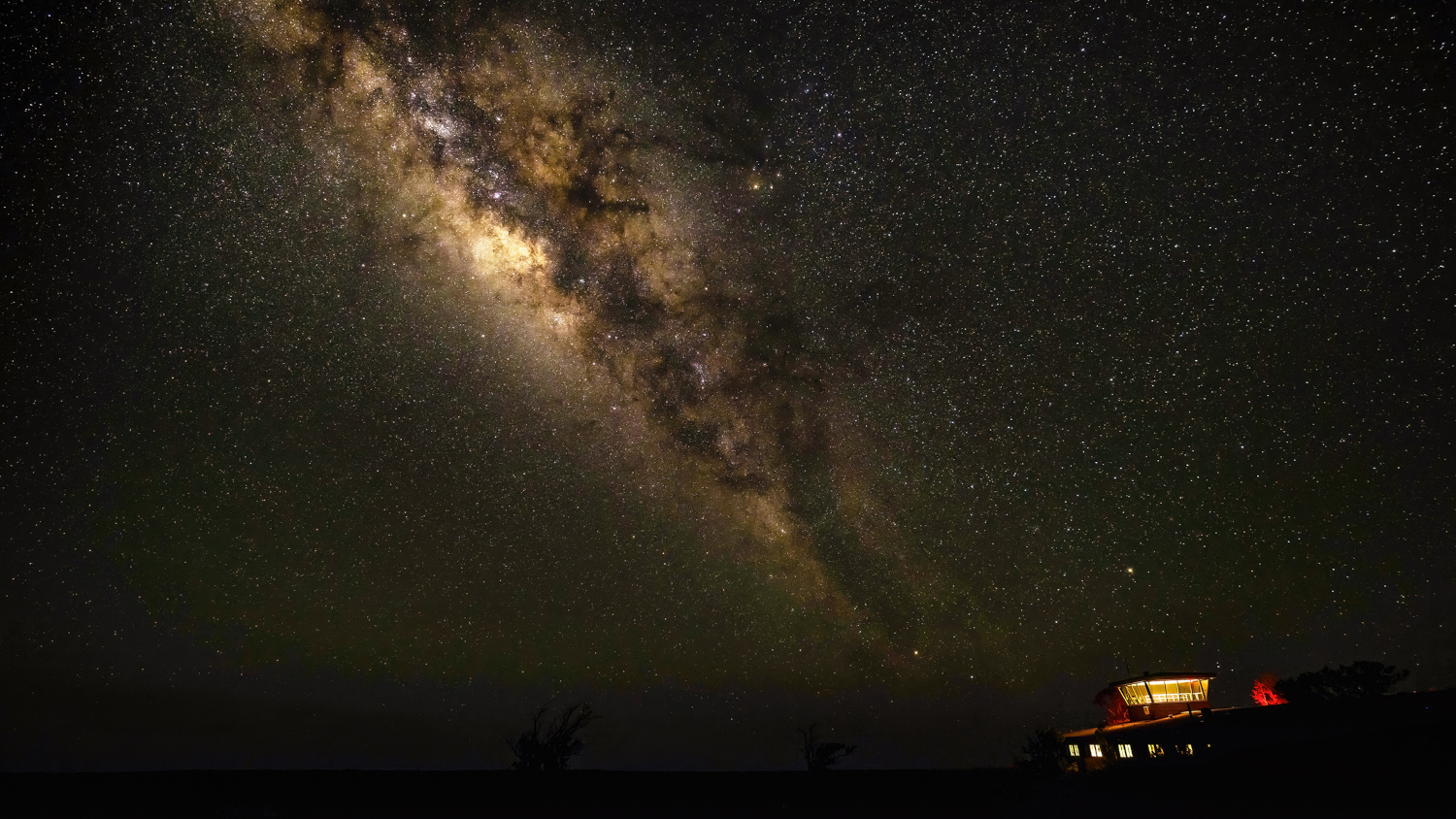

by Big Island Video News9:07 am
on at
STORY SUMMARY
HAWAIʻI VOLCANOES NATIONAL PARK - New year highlights include Hawaiian cultural programs, a fee-free day, volunteer opportunities and more.